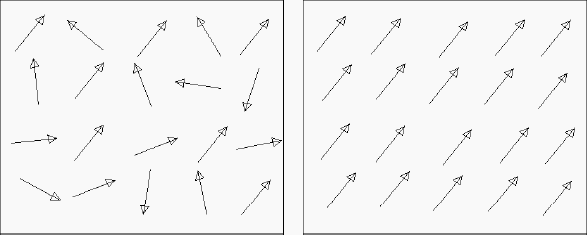Why does a transformer make noise?
This technical article explains the acoustic noise generating mechanism inside power transformers.
Transformer noise has two sources: winding vibrations and core vibrations. The single most effective way to reduce windings noise is by having a good quality controlled winding process when assembling them. This article focusses on the cores of normally silent transformers, which make noise under adverse mains conditions.
Transformer cores can become noisy as well under specific secondary load conditions which can be translated (transformed) into the adverse mains conditions at the primary as discussed in this article.
There are three physical phenomena that produce noise in the magnetic core:
- The movement of the 90-degree Bloch walls inside the magnetic domains, frequently calledMagnetoacoustic Emission (MAE) (see Figure 1)
- The rotation of the magnetic domains, that is responsible for the bulk magnetostriction (see Figure 2)
- The Lorentz Force Acoustic Signal (LFAS) causing mechanical forces between laminations of the core (see Figure 3)
MAE occurs in the steep section of the hysteresis loop; see Figure 4. Not much sound is emitted and the bulk magnetostriction is small. The rotation of the magnetic domains is dominant near saturation in the hysteresis loop.
The magnetostriction becomes “large” and the core laminations move considerably, thus generating acoustic noise (see Figure 4).
The rattling of laminations of the core (LFAS) depends largely on the construction of the core. The EI-type cores are more prone to make noise due to their many separated pieces of lamination which mostly are only sturdy clamped at the four corners. In toroidal cores the long role of core band is sturdy clamped everywhere due to the mechanical rolling tension and the pressure caused by the winding tension.
In general: magnetostriction, occurring near saturation of the core, is the main cause of the acoustical transformer noise, while LFAS largely depends on the construction of the core. Due to magnetostriction the core vibrates at the fundamental mains frequency and its harmonics and at core resonance frequencies.
In this regard it is important to notice that a noisy transformer means that:
a) The transformer is badly constructed, or
b) That the transformer is forced to operate in a magnetic region close to or at core saturation.
b) That the transformer is forced to operate in a magnetic region close to or at core saturation.
The main reason why the transformer is noisy may be a combination of the above given causes. Anyway, the device has become noisy and the amount of acoustical noise produced should be measured to determine whether or not the produced noise level is acceptable.

Figure 1 - Possible domain structures
Figure 1: Possible domain structures, showing large magnetostatic energy associated with isolated domain(a), and successively lower energies associated with (b), (c) and (d). The last represents the kind of domain structure actually observed. In (c) and (d) the 90 degrees Bloch Walls are clearly visible at the top and bottom.

Figure 2 - Rotation of magnetic domains, showing left random positioning and right the maximum orientation along the external magnetic field axis

Figure 3 - Two adjacent pieces of core band with their internal Eddy Currents. The Lorentz Forces are indicated, causing fibrational forces between the pieces of core band

Figure 4 - MAE occurs in the steep section of the hysteresis loop. Rotation and LFAS are dominant near saturation in the hysteresis loop
No comments:
Post a Comment